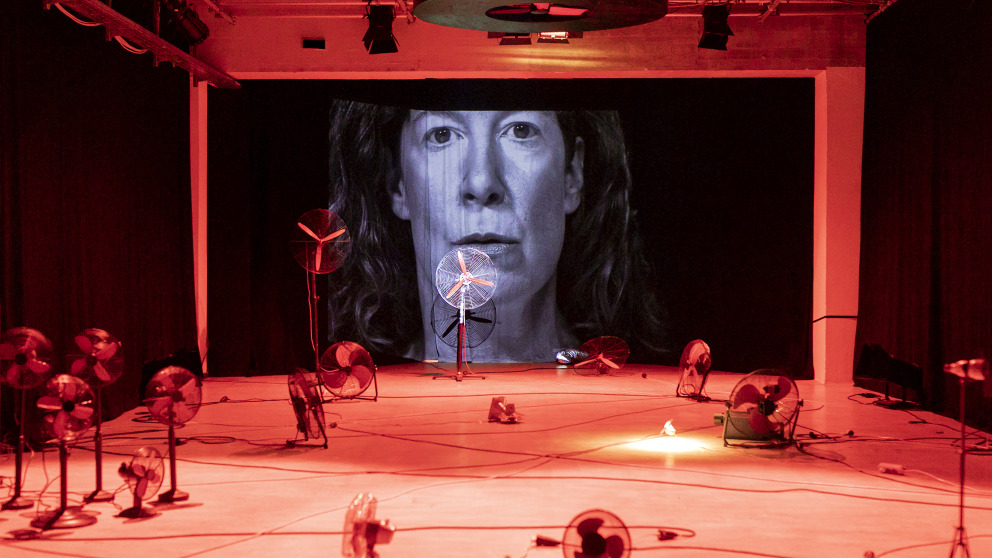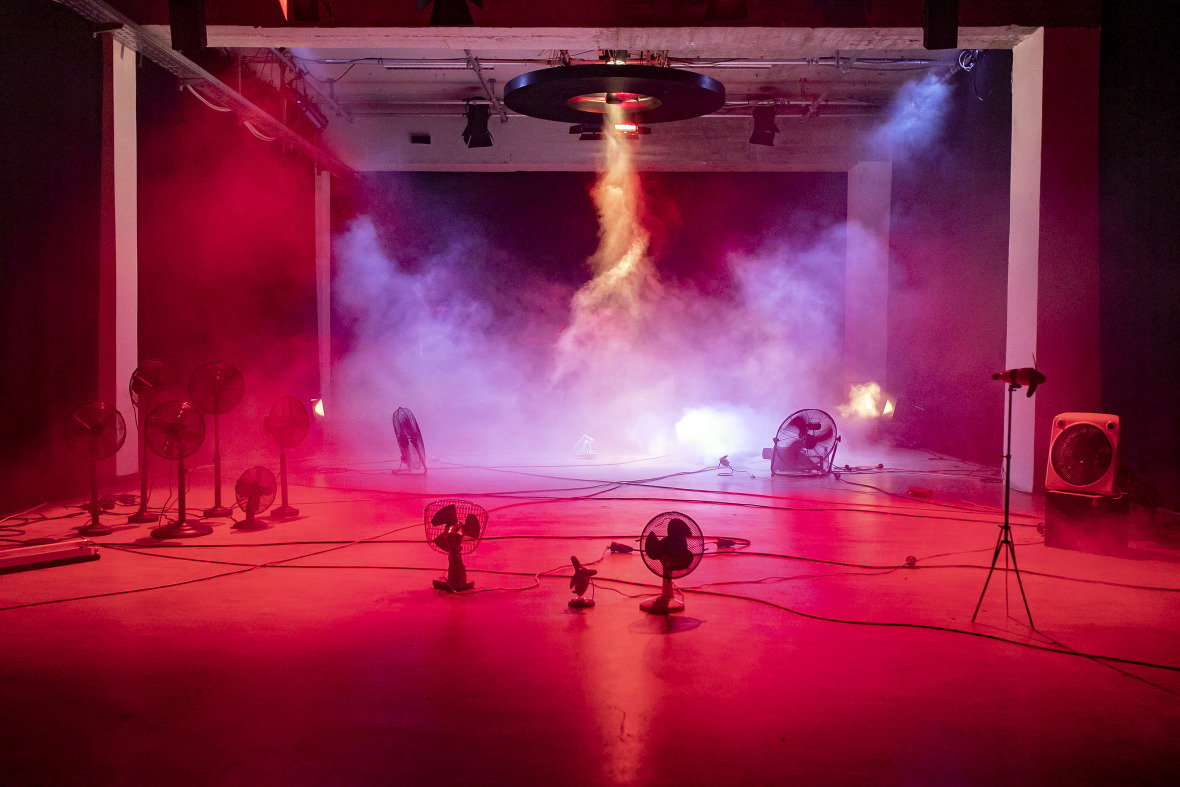Theatre Makes Complexity of Climate Change Palpable
23.09.2020

A long, grotty corridor, bathed in cold neon light. The audience of just ten people is divided into two groups and has to keep the mandatory distance of 1.5 metres while standing in line. You wait and ask yourself what’s going to happen next. This is how a performance of Tornado, a “Climate-Theatre-Disaster”, gets under way at Berlin’s Theaterdiscounter.
The pandemic restrictions are strangely in keeping with Tobias Rausch’s production of the play, which was brought to the stage with the support of the IASS. It’s based on interviews with a wide range of experts and affected people from the Alfred Wegener Institute, Ende Gelände, the World Glacier Monitoring Service, and many others. The process of evaluating these interviews and distilling narratives from them was guided and supported by Manuel Rivera from the IASS. As a researcher, Rivera is particularly interested in such processes because they show us what narratives are appropriate to describing different aspects of this hugely complex issue, rendering them communicable and thus impactful.
The effect of the play is in no way diminished by the corona restrictions. On the contrary, they amplify the unease audience members feel as a tornado in the form of climate change approaches. The disaster is divided into three parts: it starts off in a room full of small white tables arranged in a way that calls to mind the massive icebergs in the Arctic Ocean. At the edge of the stage, a woman in a heavy orange coat stands in front of a radio set from which a squawking, incomprehensible voice emanates. We’re actually nowhere near the Arctic Ocean, but at the Schkeuditzer motorway intersection, where it emerges that the woman, played by Bettina Grahs, is a weather observer hoping to see the tornado.
Her vivid descriptions of this weather phenomenon are repeatedly interrupted by attempts to communicate with her colleague (?) via radio, although we can’t hear much more than a crackle. There’s something mysterious going on here, and you get the feeling that it’s not just about the weather. The tornado is a kind of allegory of a society threatened by climate change and the different perspectives we have on the unfolding events: inside or outside, above or below.
In the next room – with a lot less white tables – we find polar researcher Florian Hertweck despairing over the fact that he knows so much about the risks and causes of climate change, but all of this knowledge does not seem to be leading to any real change. We see him standing in front of a wall of plastic bottles, stunned at the glut of shampoo on offer at a drugstore.
In part three, the two audience groups are brought together again. Fans of all shapes and sizes can be seen on the stage of a dimly lit auditorium, some of them whirring, others silent. In this longest part of the play, there are no actors, only the fans. Sitting at a distance of 1.5 metres, the audience members now listen to a sound installation with recordings of Grahs and Hertweck talking about a climate-induced evacuation, a landslide, and protests against coal mining. The three stories are dramatised in a choreography of fans which culminates in a real tornado of dry ice.

You leave the theatre feeling slightly anxious and angry at the same time. Theatre succeeds where scientific studies and countless TV programmes on the subject have failed: from an abstract, theoretical threat, climate change becomes a palpable danger, yet it remains elusive due to the associative nature of the play.
But what is ultimately to be gained when Greta Thunberg’s “I-want-you-to-panic” dictum is not just cognitively understood but also felt on an emotional level? Does that paralyse or empower us to work towards societal transformations? The fear that prophecies of doom might dishearten rather than motivate is also something that preoccupies the polar researcher in the play. To gauge the impact of the play more accurately, the performance is followed by an audience survey designed by the IASS. Beforehand, audience members are asked to fill in a short questionnaire on their prior knowledge of climate protection and demographic data. After that the actors – via live video chat – ask audience members a few questions about their state of mind. In the kind of multiple-choice, visual questionnaire common in psychological research, the audience is then asked to select the pictographic images that best describe their feelings.
The results of this accompanying research will soon be made available on our website.
